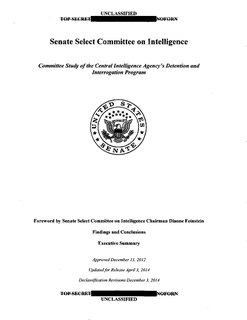Related Research Articles
The psychology of torture refers to the psychological processes underlying all aspects of torture including the relationship between the perpetrator and the victim, the immediate and long-term effects, and the political and social institutions that influence its use. Torture itself is the use of physical or psychological pain to control the victim or fulfill some needs of the perpetrator.

The American Psychological Association (APA) is the largest scientific and professional organization of psychologists in the United States, with over 133,000 members, including scientists, educators, clinicians, consultants, and students. It has 54 divisions—interest groups for different subspecialties of psychology or topical areas. The APA has an annual budget of around $115 million.

Interrogation is interviewing as commonly employed by law enforcement officers, military personnel, intelligence agencies, organized crime syndicates, and terrorist organizations with the goal of eliciting useful information, particularly information related to suspected crime. Interrogation may involve a diverse array of techniques, ranging from developing a rapport with the subject to torture.
Dissociation, as a concept that has been developed over time, is any of a wide array of experiences, ranging from a mild emotional detachment from the immediate surroundings, to a more severe disconnection from physical and emotional experiences. The major characteristic of all dissociative phenomena involves a detachment from reality, rather than a loss of reality as in psychosis.

Waterboarding is a form of torture in which water is poured over a cloth covering the face and breathing passages of an immobilized captive, causing the person to experience the sensation of drowning. In the most common method of waterboarding, the captive's face is covered with cloth or some other thin material and immobilized on their back at an incline of 10 to 20 degrees. Torturers pour water onto the face over the breathing passages, causing an almost immediate gag reflex and creating a drowning sensation for the captive. Normally, water is poured intermittently to prevent death. However, if the water is poured uninterruptedly it will lead to death by asphyxia, also called dry drowning. Waterboarding can cause extreme pain, damage to lungs, brain damage from oxygen deprivation, other physical injuries including broken bones due to struggling against restraints, and lasting psychological damage. Adverse physical effects can last for months, and psychological effects for years. The term "water board torture" appeared in press reports as early as 1976.
Psychological trauma or mental trauma is an emotional response to a distressing event or series of events, such as accidents, rape or natural disasters. Reactions such as psychological shock and psychological denial are typical. Longer-term reactions include unpredictable emotions, flashbacks, difficulties with interpersonal relationships and sometimes physical symptoms including headaches or nausea.

Survival, Evasion, Resistance, and Escape (SERE) is a training program, best known by its military acronym, that prepares U.S. military personnel, U.S. Department of Defense civilians, and private military contractors to survive and "return with honor" in survival scenarios. The curriculum includes survival skills, evading capture, application of the military code of conduct, and techniques for escape from captivity. Formally established by the U.S. Air Force at the end of World War II and the start of the Cold War, it was extended to the Navy and United States Marine Corps and consolidated within the Air Force during the Korean War with greater focus on "resistance training."
Complex post-traumatic stress disorder is a proposed psychological disorder that is theorized to develop in response to exposure to a series of traumatic events in a context in which the individual perceives little or no chance of escape, and particularly where the exposure is prolonged or repetitive. It is not yet recognized by the American Psychiatric Association or the DSM-5 as a valid disorder. In addition to the symptoms of post-traumatic stress disorder (PTSD), an individual with C-PTSD experiences emotional dysregulation, negative self-beliefs and feelings of shame, guilt or failure regarding the trauma, and interpersonal difficulties. C-PTSD relates to the trauma model of mental disorders and is associated with chronic sexual, psychological, and physical abuse or neglect, or chronic intimate partner violence, bullying, victims of kidnapping and hostage situations, indentured servants, victims of slavery and human trafficking, sweatshop workers, prisoners of war, concentration camp survivors, and prisoners kept in solitary confinement for a long period of time, or defectors from authoritarian religions. Situations involving captivity/entrapment can lead to C-PTSD-like symptoms, which can include prolonged feelings of terror, worthlessness, helplessness, and deformation of one's identity and sense of self.
The U.S. Army and CIA interrogation manuals are seven controversial military training manuals which were declassified by the Pentagon in 1996. In 1997, two additional CIA manuals were declassified in response to a Freedom of Information Act (FOIA) request filed by The Baltimore Sun. The manuals in question have been referred to by various media sources as the "torture manuals".
Torture in the United States includes documented and alleged cases of torture both inside and outside the United States by members of the government, the military, law enforcement agencies, intelligence agencies, health care services, and other public organizations.
"Enhanced interrogation techniques" or "enhanced interrogation" is a euphemism for the program of systematic torture of detainees by the Central Intelligence Agency (CIA), the Defense Intelligence Agency (DIA) and various components of the U.S. Armed Forces at remote sites around the world, including Bagram, Guantanamo Bay, Abu Ghraib, and Bucharest authorized by officials of the George W. Bush administration. Methods used included beating, binding in contorted stress positions, hooding, subjection to deafening noise, sleep disruption, sleep deprivation to the point of hallucination, deprivation of food, drink, and medical care for wounds, as well as waterboarding, walling, sexual humiliation, subjection to extreme heat or extreme cold, and confinement in small coffin-like boxes. A Guantanamo inmate's drawings of some of these tortures, to which he himself was subjected, were published in The New York Times. Some of these techniques fall under the category known as "white torture". Several detainees endured medically unnecessary "rectal rehydration", "rectal fluid resuscitation", and "rectal feeding". In addition to brutalizing detainees, there were threats to their families such as threats to harm children, and threats to sexually abuse or to cut the throat of detainees' mothers.
This article deals with the activities of the Central Intelligence Agency (CIA) of the federal government of the United States that are violations of human rights.

Military psychology is a specialization within psychology that applies psychological science to promote the readiness of military members, organizations, and operations. Military psychologists provide support to the military in many ways, including through direct clinical care, consultation to military commanders, teaching others and supporting military training, and through research relevant to military operations and personnel. The stressors associated with military service are many including exposure to high-risk training and combat. As such, psychologists are critical support components that assist military leaders in designing appropriate training programs, providing oversight to those programs, and assisting military members as they navigate the challenges of military training and their new lifestyle. Most issues facing military members are not that dissimilar from those faced by their civilian counterparts. Specific examples that may be somewhat distinct include posttraumatic stress disorder (PTSD) associated with combat, or guilt and family/partner difficulties accompanying extended or frequent deployments due to separation. Clinical providers in military psychology are often focused on the treatment of stress, fatigue, and other personal readiness issues.
Jonathan Shay is a doctor and clinical psychiatrist. He holds a B.A from Harvard (1963) and an M.D. (1971) and a Ph.D. (1972) from the University of Pennsylvania. He is best known for his publications comparing the experiences of Vietnam veterans with the descriptions of war and homecoming in Homer's Iliad and Odyssey.
James Elmer Mitchell is an American psychologist and former member of the United States Air Force. From 2002, after his retirement from the military, to 2009, his company Mitchell Jessen and Associates received $81 million on contract from the CIA to carry out the interrogation of detainees, referred to as "enhanced interrogation techniques".

John Bruce Jessen is an American psychologist who, with James Elmer Mitchell, created the so-called "enhanced interrogation techniques" that were used in the interrogation and torture of CIA detainees. and outlined in the United States Senate Select Committee on Intelligence's report on CIA torture. In that report, he was mentioned under the pseudonym "Hammond Dunbar." His company, Mitchell Jessen and Associates, earned US$81 million for its work.
Anxiety buffer disruption theory (ABDT) is an application of terror management theory to explain an individual's reaction to a traumatic event, which leads to post traumatic stress disorder. Terror management theory posits that humans, unlike any other organism, are uniquely aware that death is the inevitable outcome of life. When thoughts of death are made salient, such as when a terrorist attack carries those thoughts into the level of consciousness, humans are subject to debilitating anxiety unless it can be "buffered." Humans respond to the anxiety and dread mortality salience produces by clinging to their cultural worldview, through self-esteem and also close personal relationships. Cultural worldviews, with their cultural norms, religious beliefs and moral values infuse life with meaning. They give life a feeling of normalcy and also a feeling of control. There is no way to definitely prove one's cultural worldview, there they are fragile human constructs and must be maintained. Clinging to a cultural worldview and self-esteem buffer the anxiety connected to thoughts of mortality. When thoughts of death are salient, humans are drawn to their cultural world view which "stipulates appropriate social requirements, and standards for valued conduct, while instilling one's life with meaning, order and permanence."

The Committee Study of the Central Intelligence Agency's Detention and Interrogation Program is a report compiled by the bipartisan United States Senate Select Committee on Intelligence (SSCI) about the Central Intelligence Agency (CIA)'s Detention and Interrogation Program and its use of torture during interrogation in U.S. government communiqués on detainees in CIA custody. The report covers CIA activities before, during, and after the "War on Terror". The initial report was approved on December 13, 2012, by a vote of 9–6, with seven Democrats, one Independent, and one Republican voting in favor of the report and six Republicans voting in opposition.

Richard Allan Bryant is an Australian medical scientist. He is Scientia Professor of Psychology at the University of New South Wales (UNSW) and director of the UNSW Traumatic Stress Clinic, based at UNSW and Westmead Institute for Medical Research. His main areas of research are posttraumatic stress disorder (PTSD) and prolonged grief disorder. On 13 June 2016 he was appointed a Companion of the Order of Australia (AC), for eminent service to medical research in the field of psychotraumatology, as a psychologist and author, to the study of Indigenous mental health, as an advisor to a range of government and international organisations, and to professional societies.
Psychotraumatology is the study of psychological trauma. Specifically, this discipline is involved with treating, preventing, and researching traumatic situations and people's reactions to them. It particularly focuses on the treatment of post-traumatic stress disorder (PTSD) and acute stress disorder (ASD), but can be used to treat any adverse reactions a person may have after experiencing a traumatic event.
References
- ↑ Department of Psychiatry. "Yale School of Medicine". Yale University. Archived from the original on 31 December 2013. Retrieved 20 February 2013.
- ↑ Anthony P. Doran; Gary Hoyt; Charles A. Morgan III (2006-08-18). Survival, Evasion, Resistance and Escape (SERE) Training: Preparing Military Members for the Demands of Captivity. Chapter 11 of Military Psychology: Clinical and Operational Applications, Guiford Publications. ISBN 978-1-57230-724-7 . Retrieved 2009-09-26.
- ↑ Allen D. Leth, Jr. (2009). "The relationship between Post Traumatic Stress and physical fitness and the impact of Army fitness policy on Post Traumatic Stress prevention" (PDF). U.S. Army Command and General Staff College. Archived from the original (PDF) on 2010-07-26. Retrieved 2009-09-26.
Dr. Charles Morgan III, a leading scientist in the field of PTSD, has identified a lack of information in the area of preventing PTSD and has plans to conduct research in this area as well as several planned studies to determine methods of prevention for PTSD (National Center for PTSD).
- ↑ Charles A. Morgan III; Sheila Wang; John Mason; Steven M. Southwick; Patrick Fox; Gary Hazlett; Dennis S. Charney; Gary Greenfield (2001). Steven Hyman (ed.). Hormone Profiles i nHumans Experiencing Military Survival Training. in Stress and the Brain: The Science of Mental Health, Routledge. ISBN 978-0-8153-3752-2.
- ↑ Amanda O'Donnell; Charles A. Morgan; Emil Jovanov; Frank Andrasik; Michael C. Prevost; David J. Blower (October 2002). "The Warfighter's Stress Response: Telemetric and Noninvasive Assessment" (PDF). Naval Aerospace Medical Research Laboratory. Archived from the original (PDF) on 2010-05-01.
- ↑ Scott Shane (2007-06-03). "Soviet-Style 'Torture' Becomes 'Interrogation'". The New York Times . Archived from the original on 2011-03-17. Retrieved 2009-09-26.
- ↑ David H. Hoffman; Danielle J. Carter; Cara R. Viglucci Lopez; Heather L. Benzmiller; Ava X. Guo; S. Yasir Latifi; Daniel C. Craig (2015-09-04). Report to the Special Committee of the Board of Directors of the American Psychological Association Independent Review Relating to APA Ethics Guidelines, National Security Interrogations, and Torture (PDF). Sidley Austin LLP. Archived from the original (PDF) on 2016-06-29. Retrieved 2016-11-06.
- ↑ Kaye, Jeffery (September 27, 2009). "Smoking Gun on CIA Torture Conspiracy? Human Experimentation Central to EIT Program". pubrecord.org. The Public Record. Retrieved December 15, 2016.
One of the authors of these reports, Charles A. Morgan III, M.D., who has identified himself in certain settings as a 'Senior Research Scientist' on the CIA’s Behavioral Science Staff, has criticized my coverage of CIA experiments on the psychological and physiological effects of SERE training upon human subjects. While he could not specify what aspects of this coverage he felt were 'inaccurate and misleading,' he did insist: 'The research conducted by our research team at the National Center for Post Traumatic Stress Disorder is not, and never has been, conducted for any other purpose than to help us understand the pathophysiology of stress disorders and we might better help in the treatment of veterans.' In making his mea culpa, Dr. Morgan never mentions that some of this research was funded (over $400,000) by the Army and the Office of Naval Research. He doesn’t mention his acquaintance with “great people who do military interrogations.” He also forgets to cite his book contribution, where he states (emphasis added): 'The SERE training environment affords the military services the opportunity to collaborate with various other government agencies in exploring old and new techniques in gathering human intelligence.' Of course, he neither confirms nor denies his affiliation with the CIA, an affiliation which I have traced to the CIA’s Science and Technology directorate, through his association (large PDF) with the Intelligence Technology Innovation Center, which is 'a research organization under the CIA’s authority' that 'answers directly to the CIA’s Science and Technology directorate.' But most of all, Dr. Morgan’s arrows fall way short of his target, as I have never accused him of personal involvement in the reverse-engineering of SERE techniques for use in the torture program. What is disturbing is his seeming lack of concern over the possibility that the research he helped conduct was either used to further experiments upon torture victims in the CIA’s clandestine prisons, or contrariwise, was withheld from Office of Legal Counsel lawyers who relied upon CIA advice concerning the effects of techniques derived from the SERE schools. What is indisputable is that by virtue of his position, Dr. Morgan had access to CIA officials just at the time that another department of the CIA, one to which he is affiliated, was, according to the CIA’s own Office of Inspector General Report (large PDF) involved in vetting the SERE techniques for use in interrogations. The other department was the Office of Technical Services (OTS), part of the CIA’s Science and Technology Directorate.
- ↑ Kaye, Jeffery (September 25, 2009). "CIA/SERE Experiments Evidence of Attempt to Mislead on OLC Torture Memos". pubrecord.org. The Public Record. Retrieved December 15, 2016.
The researcher, Charles A. Morgan III, has identified himself, in certain settings, as a CIA behavioral scientist...The 'CIA Experiments' article described some of the research Dr. Morgan and his associates have conducted using SERE trainees, many of them Special Forces personnel. (Professor O’Hara cites one of Morgan's articles himself – see footnote 9 to his paper.) In a June 2000 article, 'Assessment of Humans Experiencing Uncontrollable Stress: The SERE Course,' in Special Warfare (PDF), Morgan and his Special Operations psychologist co-author cite 'recorded changes in cortisol levels' among individuals subjected to SERE techniques as 'some of the greatest ever documented in humans.' As Professor O’Mara notes in his own essay, a 'substantial increase in cortisol levels has a deleterious effect on memory.' The same article described testosterone levels falling in male subjects to below castration levels. Another article by Morgan and his team looked at dissociative psychological effects of SERE techniques upon human subjects. (Dissociation produces symptoms such as depersonalization, derealization, psychic or emotional numbing, and general cognitive confusion.) Results: In study 1, 96% of subjects reported dissociative symptoms in response to acute stress. Total scores, as well as individual item scores, on the dissociation scale were significantly lower in Special Forces soldiers compared to general infantry troops. In study 2, 42% of subjects reported dissociative symptoms before stress and 96% reported them after acute stress.
- ↑ "National Security Professor Featured in New Television Series". University of New Haven. Retrieved 2022-02-09.
- ↑ "Morgan Charles A." IMDb. Retrieved 2022-02-09.